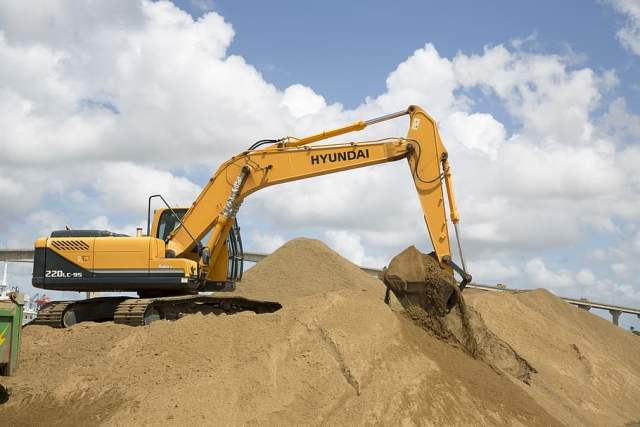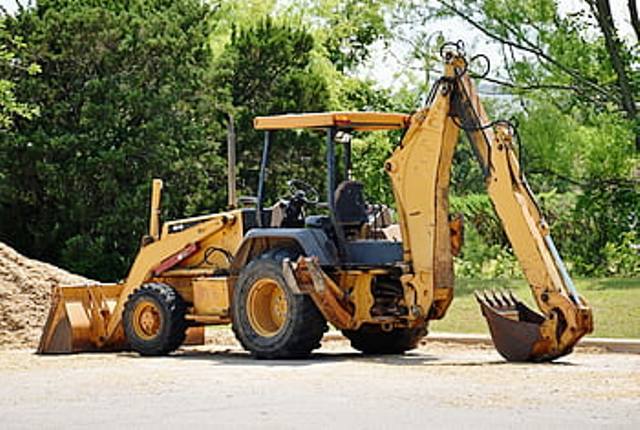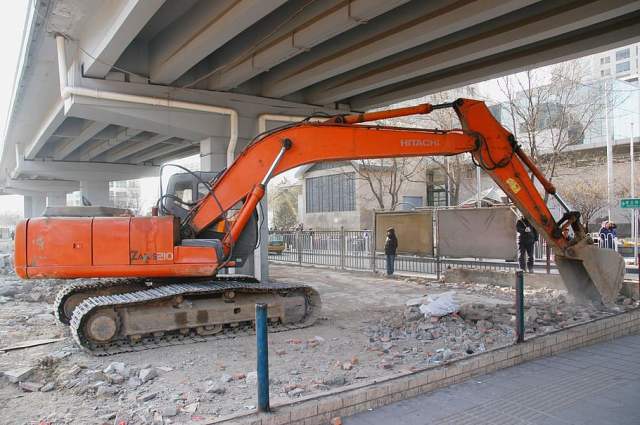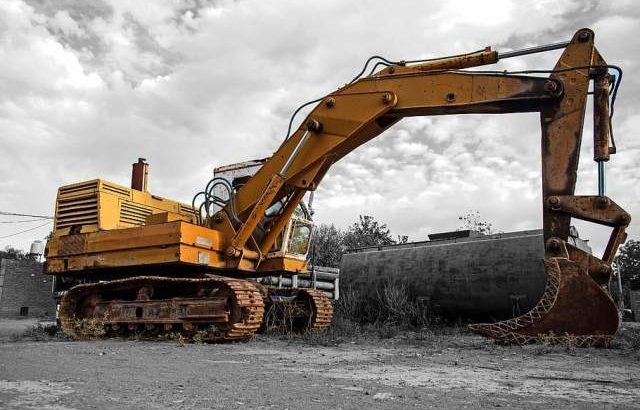In house construction, but also in exterior landscaping (garden, swimming pool, etc.) we no longer talk about making a hole but about doing an excavation. A trench or the digging of foundations are excavation operations where the soil must be dug, the material extracted, and stored as backfill or evacuated. Similarly, polluted soil often requires excavation to bring the soil to a treatment center. What is the principle of excavation under construction?
Definition and principle of an excavation
Definition of an excavation

If the dictionary definition of excavation is that of a hole, a hollow or a cavity in the ground, in the construction industry we make the difference between drilling and excavation. Drilling is a deep hole generally of moderate diameter intended to reach a low point (groundwater for drawing raw water or geothermal energy), whereas excavation is generally the disbursement of a large surface area of soil at a shallower depth and is part of earthmoving operations.
Principle of an excavation
The principle of excavation is to either settle (extract earth in order to lower the level of the ground) in order to either provide a foundation lower than the surrounding level (excavation of building foundations, swimming pool slabs…) and to reach a firmer layer of soil, or to extract earth that one wishes to use in situ (backfill) or that one wishes to evacuate.
If the excavation of small dimensions (width, length, depth) of a small trench can still be done manually (pickaxe, spade, shovel), as soon as the volume of soil will become important, it will be necessary to mechanize the operation using excavation equipment (mechanical shovel, excavator…) and transport equipment (crawler wheelbarrow, transporter, truck…).
The stages of an excavation

Define the dimensions
While extracting soil to create an embankment or to bring it to a polluted soil treatment center requires little precision as to the dimensions of the space to be excavated, in house construction and outdoor development (trenches, swimming pool) the first step is to define the dimensions and to carry out the staking.
The construction site plan is then used as the basis for marking the boundaries of the area to be excavated and defining the depth of excavation to be used. It is then necessary to use the surveyor’s tools or even call in a professional to “implant” the excavations (theodolite, GPS markers, etc.) and then, if necessary, to ensure the depth and flatness (level, laser level, etc.).
Good to know: it is useful to know in advance the volume of earth that will be excavated in order to plan for its storage and/or transport. Beware of the swelling which is a kind of swelling of the soil found between the volume of soil packed in the ground and the volume of soil that has been extracted. It is considered that one cubic meter of the earth (m3) to be extracted represents between 1.3 m3 and 1.4 m3 after expansion.
Excavate the soil

Depending on the type of excavation (trenching or foundation excavation or extraction), it is necessary to use excavation equipment adapted to the site. A trench can be excavated with a micro excavator (< 1 t) or a mini excavator (< 6 t), while for large excavations a large hydraulic excavator will have to be used.
Good to know: the power of an excavator is a function of its weight, but the size of the bucket is an important criterion to be chosen according to the job site, as is the length of its arm and its ability to handle a hydraulic rock breaker if rocks have to be broken.
Transporting excavated soil
If it is then necessary to transport the soil either away from the excavation but in situ or out of the area, a wheeled or tracked loader, motorized wheelbarrow, truck, etc. should be used.
Good to know: Unless you offer the excavated soil as fill that some people are looking for, consider dumping it in a landfill site. In fact, landfilling is mandatory for polluted soil. Landfill disposal is subject to authorization and has a cost per ton.
Are you looking for a heavy equipment supplier in South Florida?
ALLINSON SOLUTIONS supplies new and used heavy equipment for manufacturing companies and commercial builders in Miami. Whether you are looking for cranes, trucks, excavators, compactors, or any other new and used heavy equipment in Miami. They have the perfect team to assist you. Their engineers have years of experience and expertise, and they will find the perfect new or used heavy equipment that suits your specific business requirements. They also provide heavy equipment parts and other heavy machinery for industry.
Hope you find your perfect heavy equipment after reading this post. Remember to leave your comments in the section below.




















